I've arrived back home. My African trip is done. I close this blog by sharing two stories/people that I met. Unfortunately, I do not have photos of either, but they do have websites.
I was bemoaning the fact that despite coffee being grown near Tororo, you can't get a decent cup of coffee at the hotel. I ran into the CEO of Farm Mountain Coffee, http://www.farmmountain.com a Dane who is working with local coffee growers to produce higher quality coffee, and to pay the growers much better than the prevailing rate. I bought some of the coffee and the book he produced to show the local farmers the keys to good quality coffee, especially the children who are often involved in harvesting.
On my last day in Tororo, a white man came to the guest house on a bicycle. I asked where he had come from and he said Germany. I said, no seriously. He again said that he came from Germany and was serious. It turns out that he is bicycling around the world, and going from Germany to South Africa is the first of 3 legs of the trip to highlight an aid project Sibongile, home for severly disabled children in South Africa. Check out his website at http://worldbiketrip.de
. Though it is in German, you can choose English or Spanish as the language on the right column.
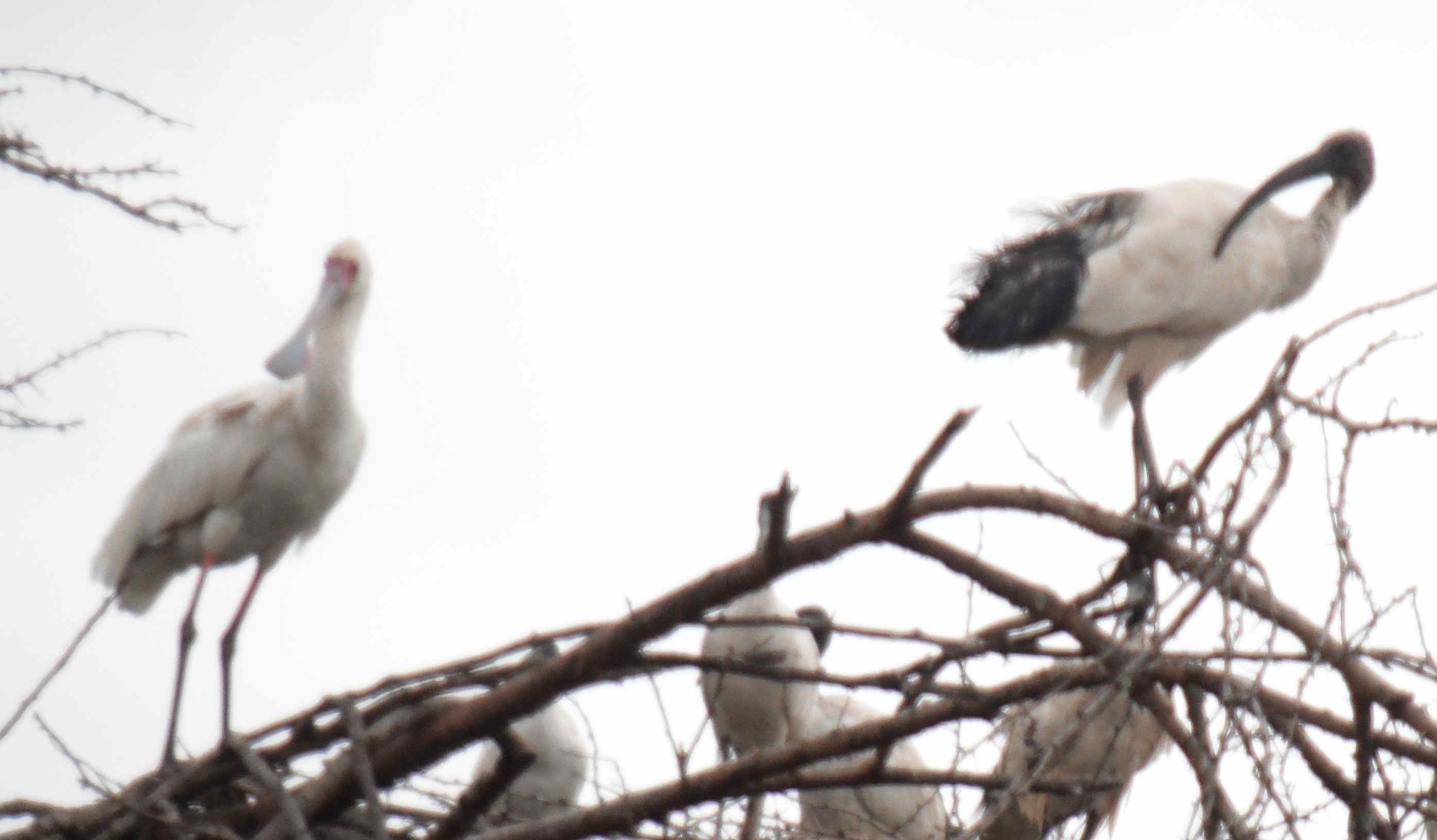
It is my last non-traveling day in Africa so I am writing my summary report and drinking Tusker, Kenyan beer (fortunately cold) by the pool overlooking Lake Victoria, listening to squaking parrots and graceful Sacred Ibises flying by. I couldn't get a decent photo of either so the image is of the Sacred Ibis, right, and African spoonbill, left, at Nairobi National Park.

As you see, I am enamoured with all the birds, but I couldn't resist this lizard in the patio of the guest house!
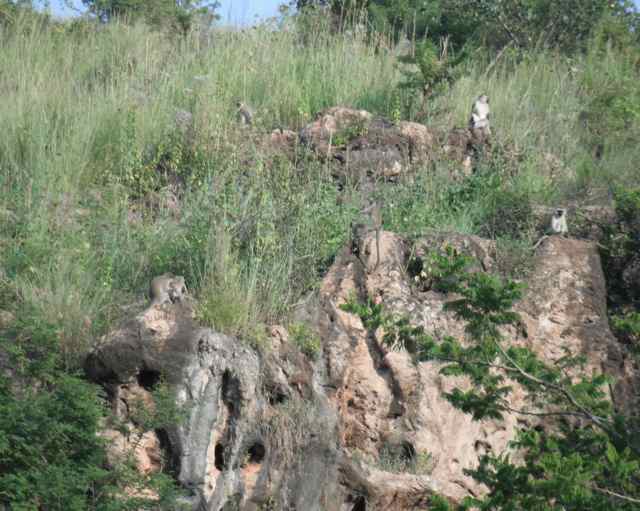
At the nearby Tororo Golf Course established in 1959, you can see monkeys every morning coming out after sunrise.
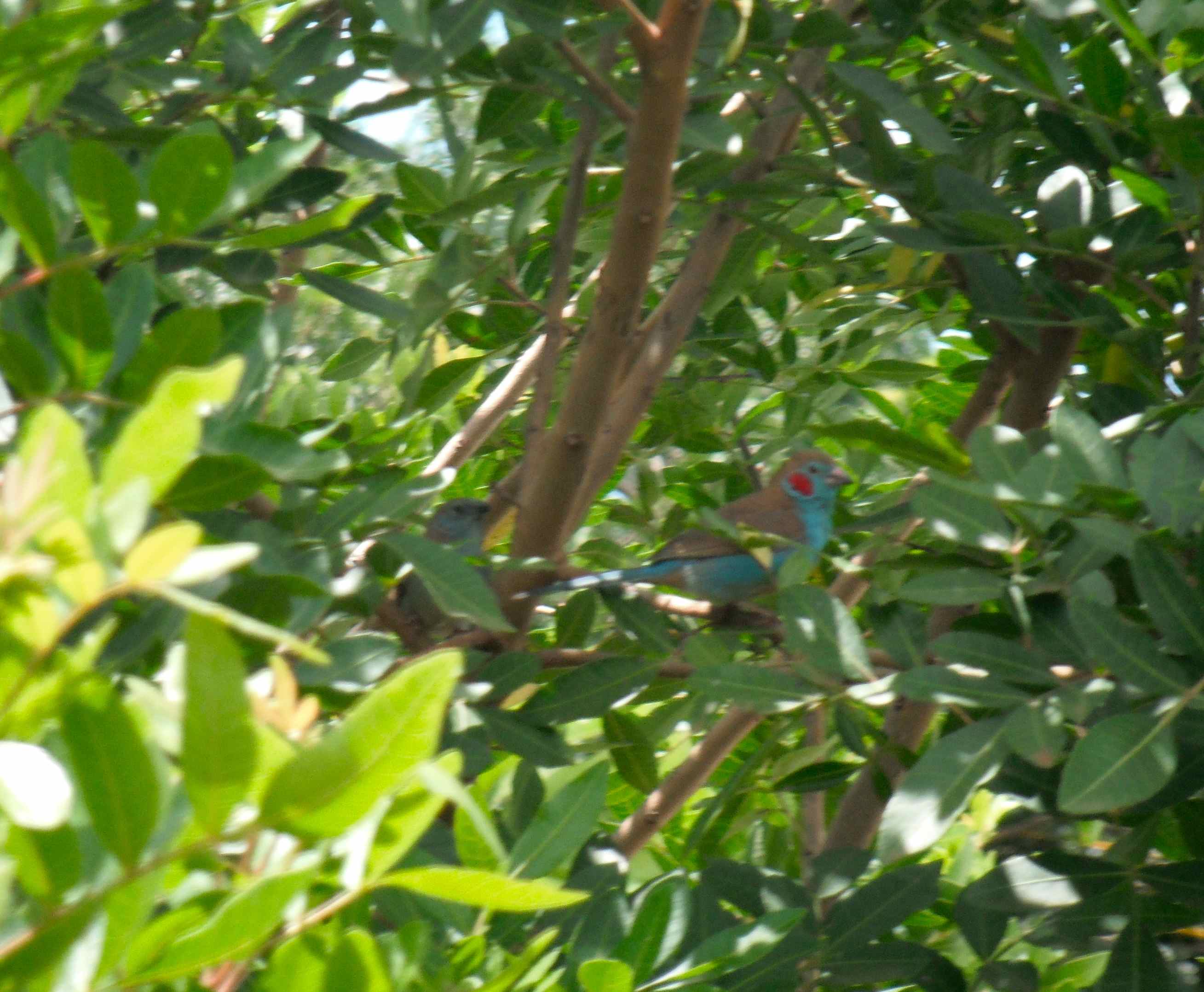
I moved to a "guest house" or bed-and-breakfast, which is so much more peaceful and better for bird watching that I decided to stay an extra night. Every morning, a pair of Long-crested Eagles perch on a nearby tree and squawking of the Black-and-white Casque Hornbills announce their presence. Above is a pair of tiny waxbills, called Red-cheeked CordonBleu. They are very common and I finally got a reasonable photo of a pair. The red cheeks are genuine, and not enhanced!
I haven't commented on the weather here because it has been steady mid-80's during the day and mid-60's at night. Very pleasant and not nearly as hot as I expected for Equatorial Africa. But I comment on it now since much of US is suffering from extreme heat, and I told some people here that "It is much hotter in America and some people are dying from the heat." Which they found surprising.
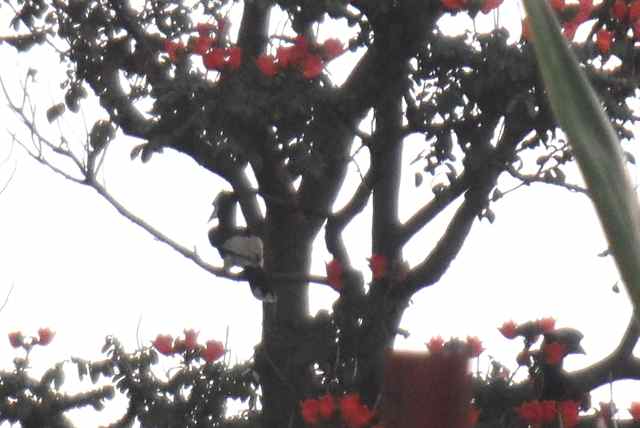
I've seen hornbills, but have not succeeded in photographing them, and I wouldn't call this a success, but it shows enough to identify it as a Black-and-white Casque Hornbill. They are quite large, and one of my entomologists told me that ground hornbills broke all the glass at ground level at his home because they saw their reflection and attacked them with their huge bills!
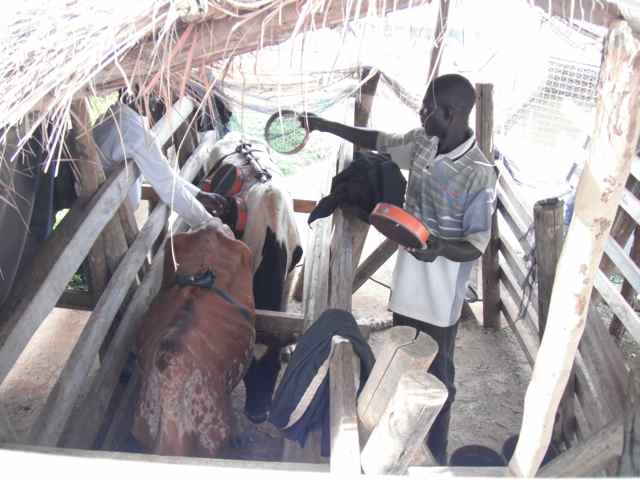
The National Livestock Resource and Research Center where I am doing the work was originally the Uganda Trypanosoma Research Organization. There is still a significant amount of Trypanosome research going on, and a laboratory colonies of tsetse flies that need to be maintained on blood.

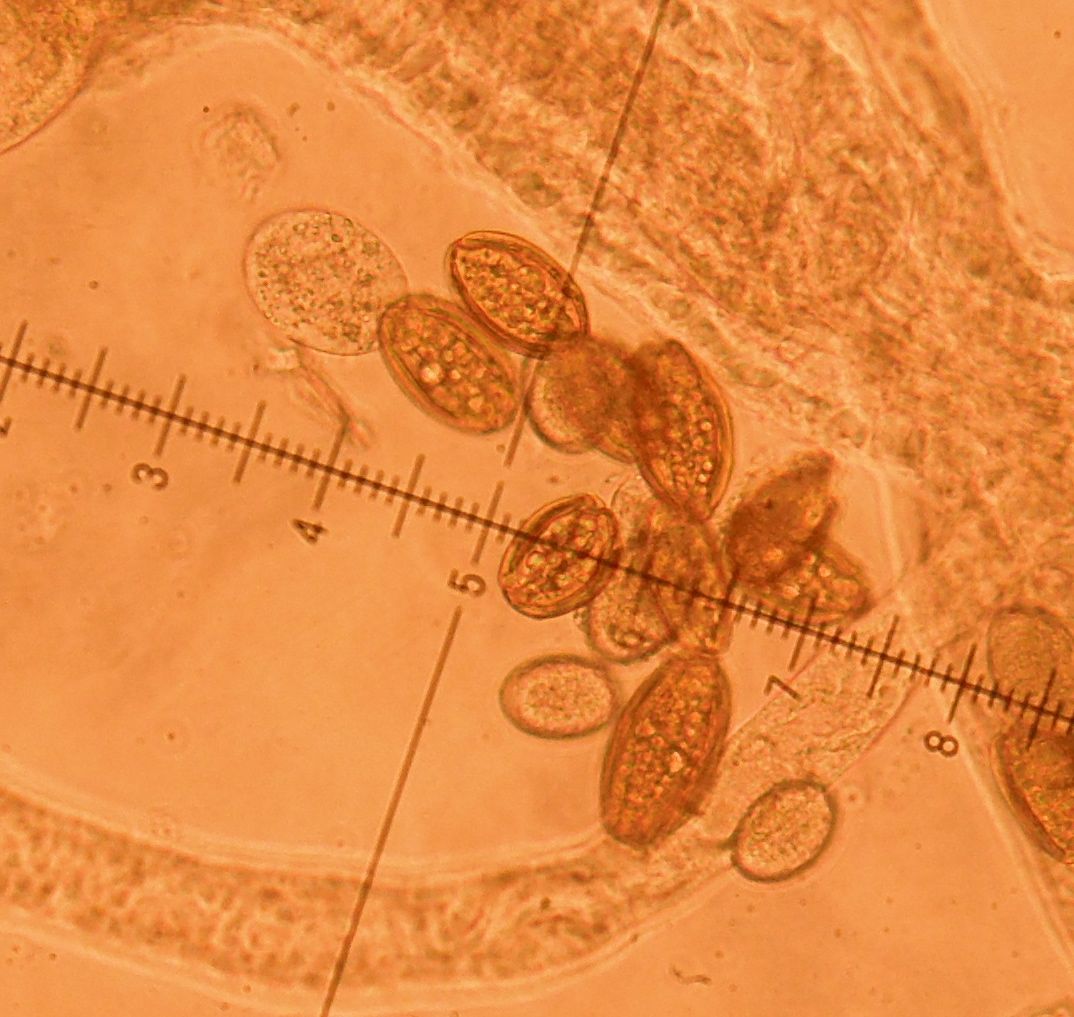
Here are some images of gregarines I've found. These were taken with a point-and-shoot digital camera through the eyepiece. The top is the best image I've gotten of a typical gregarine found in the salivary gland reported back in the late '60's. The second is an image of gregarines found in the larva. These are quite prevalent in 4th instar Anopheles larvae, but no one, as far as I know, have looked for them in the larvae.
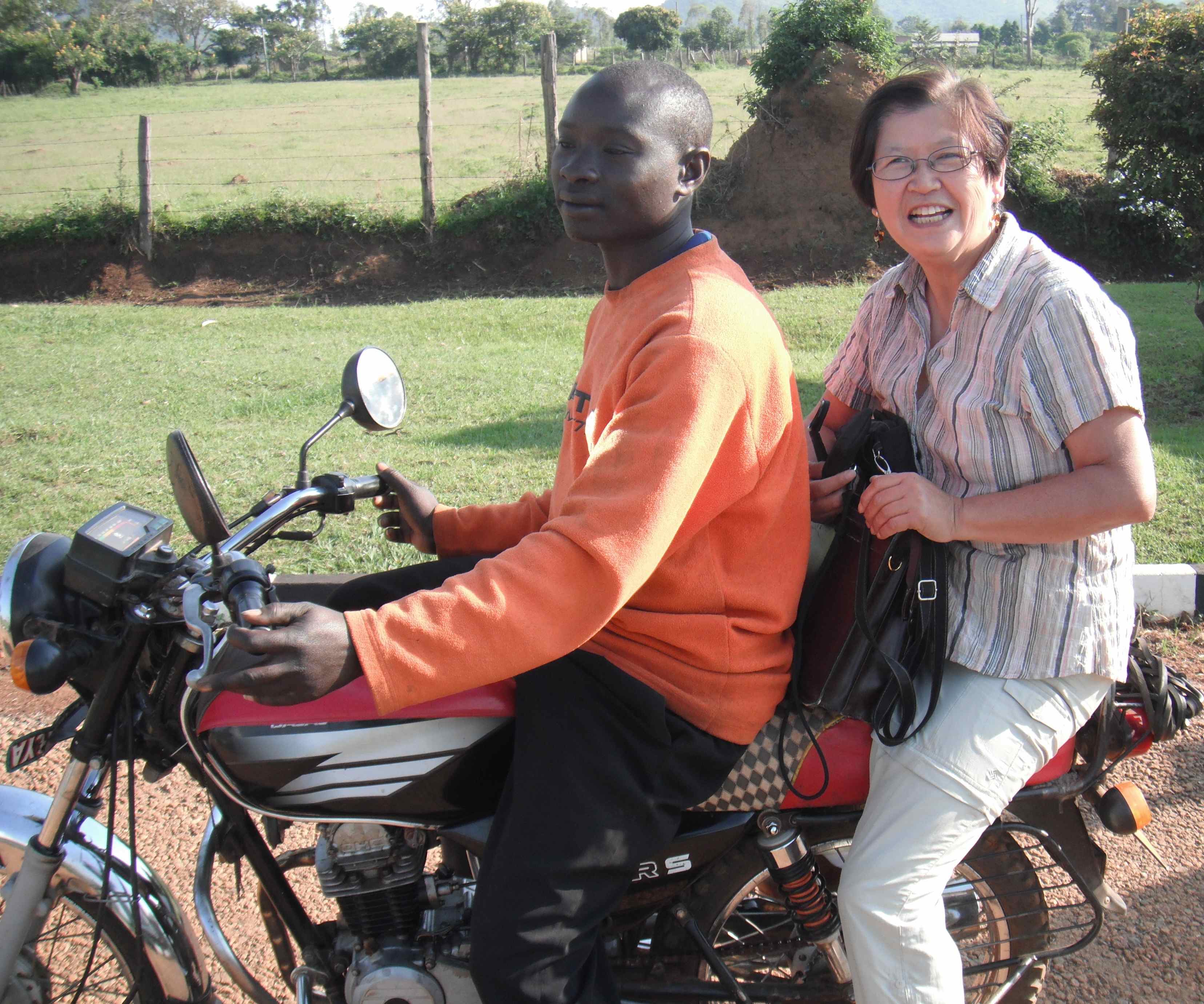
This morning, my driver and collectors went a bit far afield to collect live adult mosquitoes, so I took a motorcycle, locally called a Boda Boda to lab. The ride was pleasant so I don't know why I look that way!
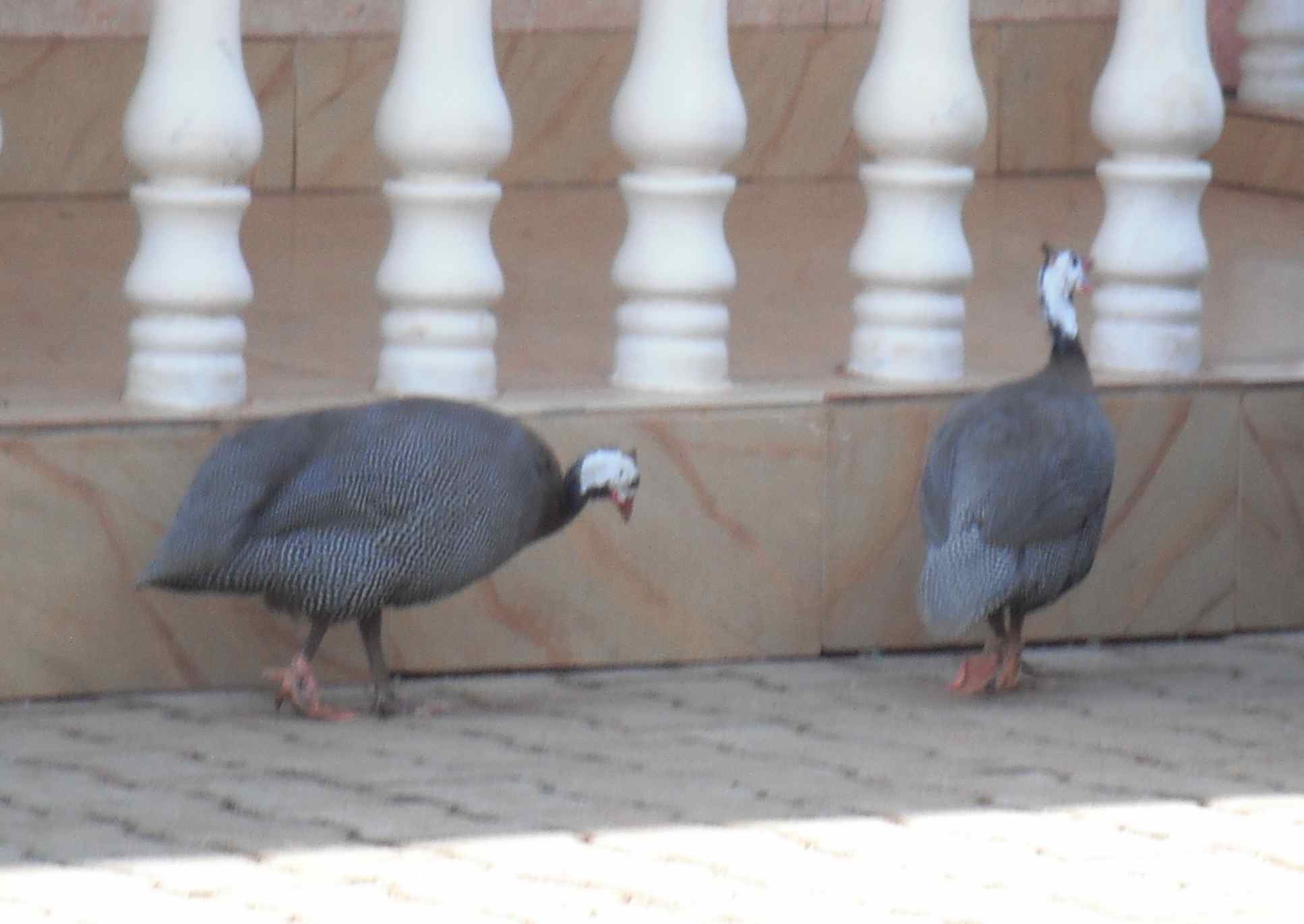
I saw these helmeted guinea fowl just sauntering along the road in Tororo!
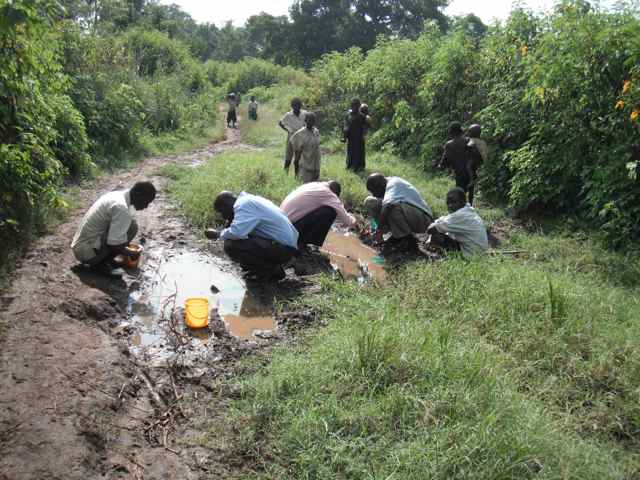
After many planning days, we, entomologists, entomologist assistants and I, got out in the field to collect anopheline larva. I was at first amazed that they can distinguish anopheline larva from other mosquito larva in these temporary pools, but by the end of the day, I was having some success in finding them, too.

The monkeys in Uganda are smart! They act as tour guides in the zoo!
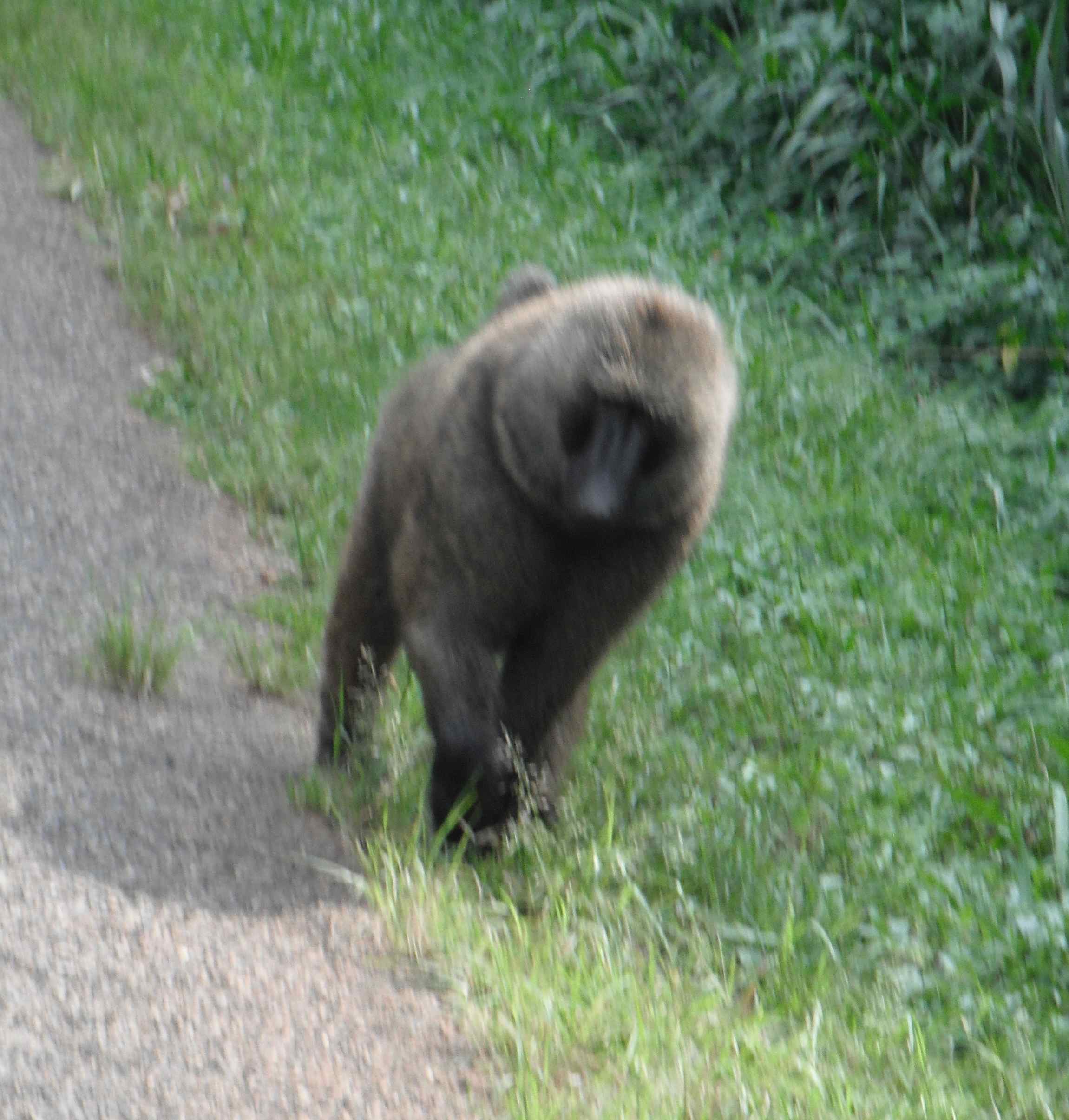
Baboons are common in the forest region between Tororo and Jinja!
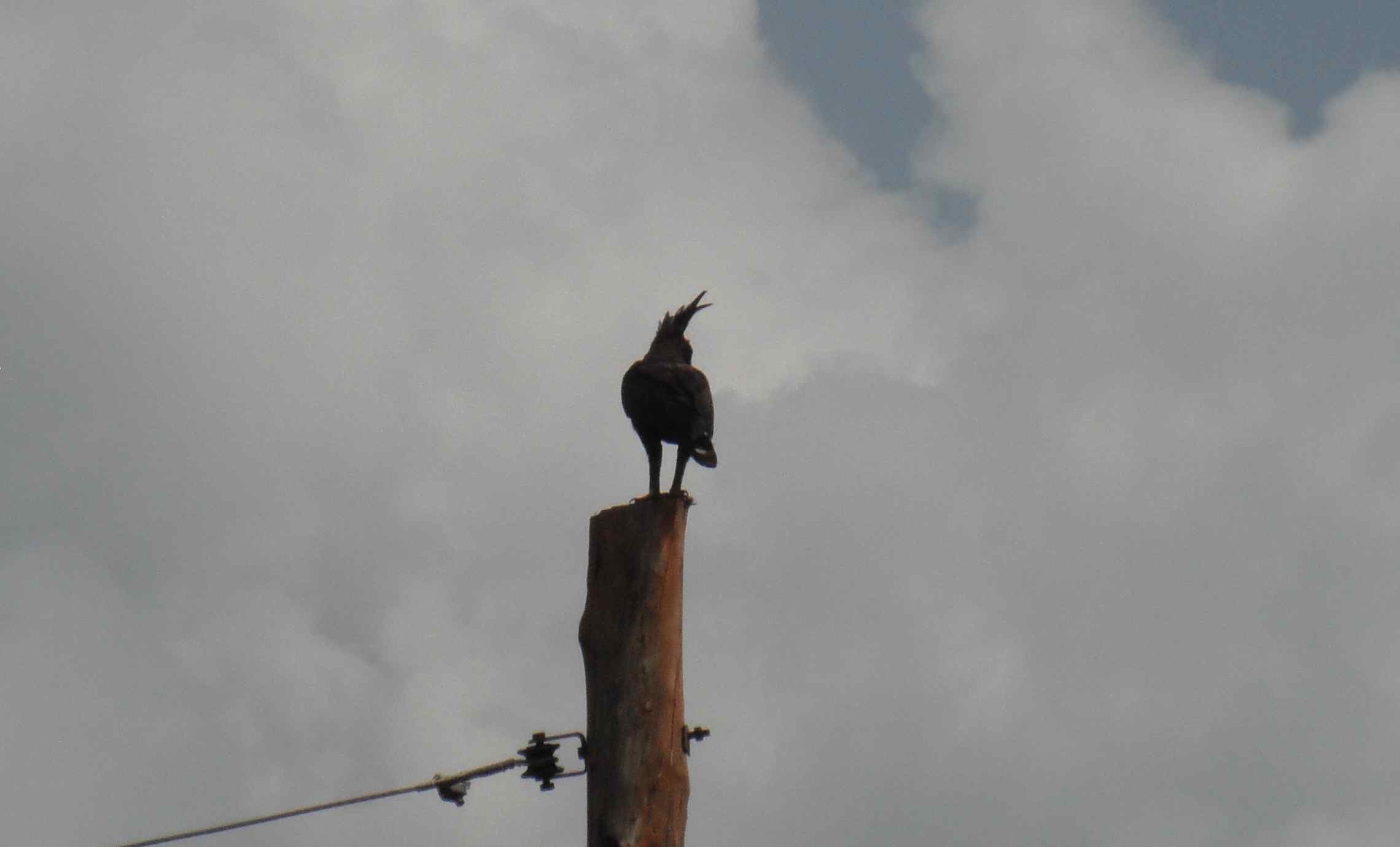
There are many more types of birds of prey in East Africa, and they are quite common. I saw many as I drove around, but here is a crested eagle perched on a nearby pole with its crest blowing in the wind!

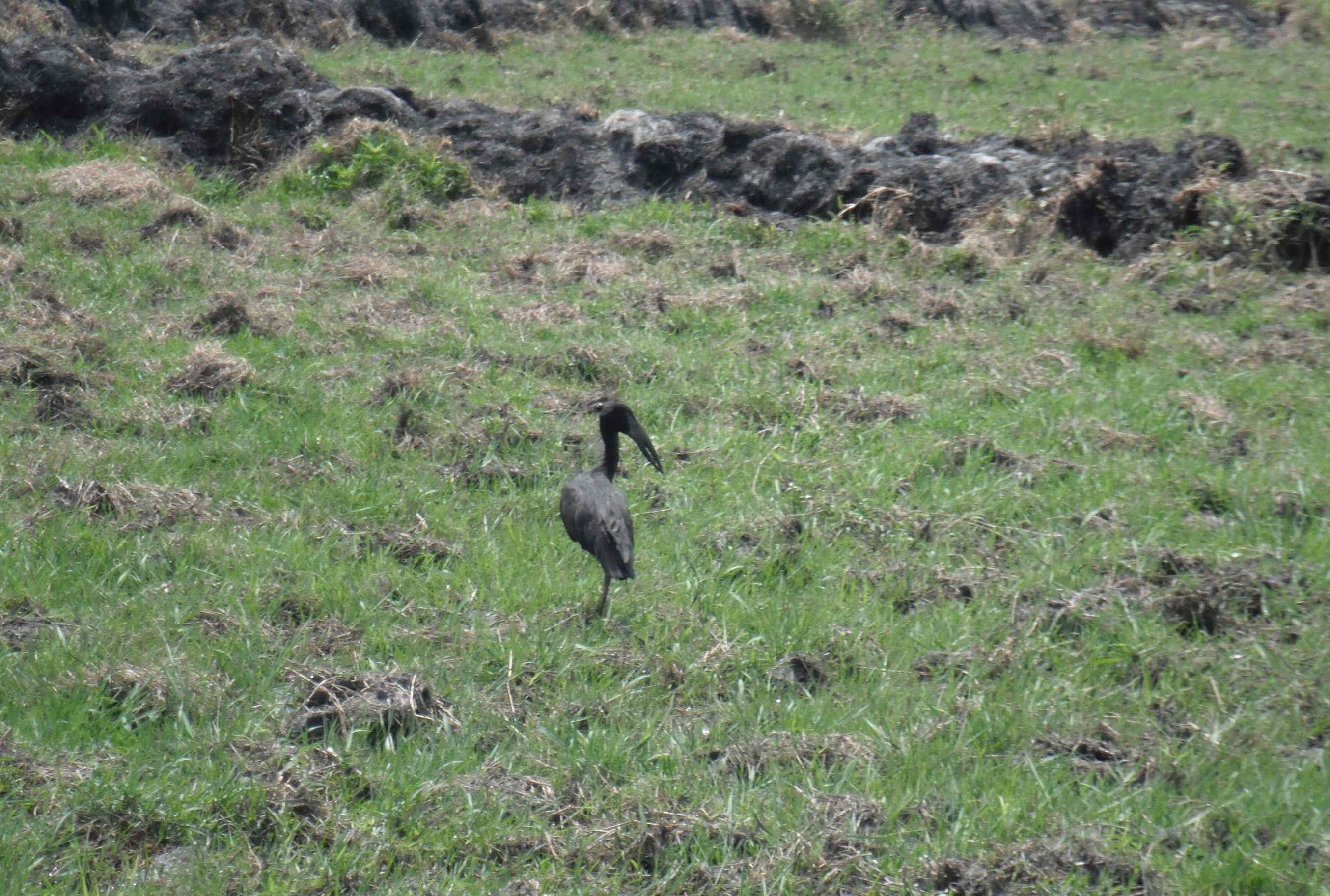
At the Kibimba Rice Schemes, saw many of the usual water birds including egrets, ibises, herons and the grey-crowned cranes, the national bird of Uganda. Also saw the odd-looking African open-billed stork, note the gap between the bills even when closed.
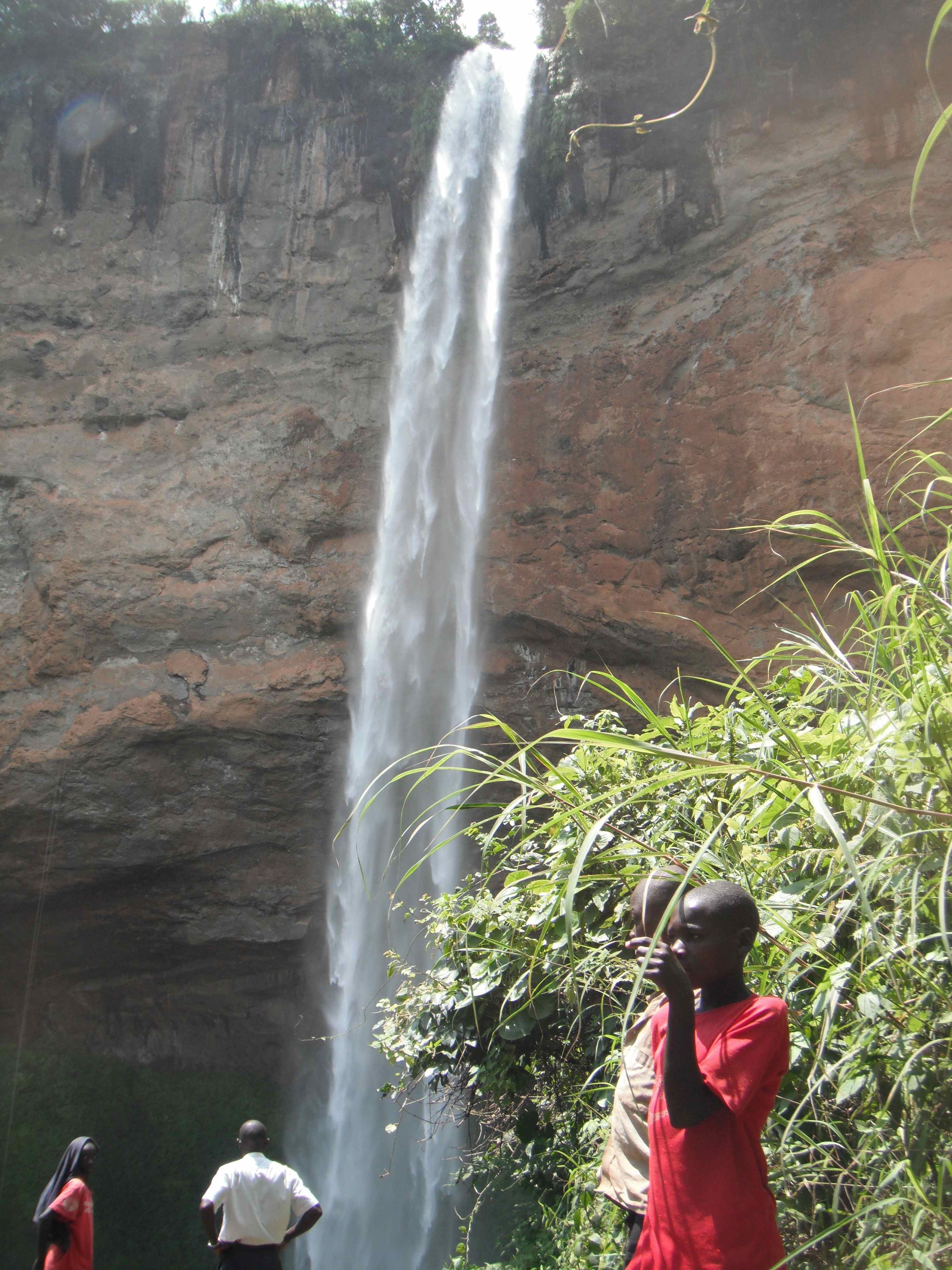
I toured Mount Elgon and its National Park which straddles Kenya and Uganda. Sipi Falls at the base just outside the National Park was our first stop. Several young boys followed us on the narrow dirt path to the Falls. Along the way, I saw coffee, pepper and eggplant that looked like large cherry tomatoes. Afro-alpine vegetation above 3500m includes lobelias, but I had neither the time or stamina to hike to see it.
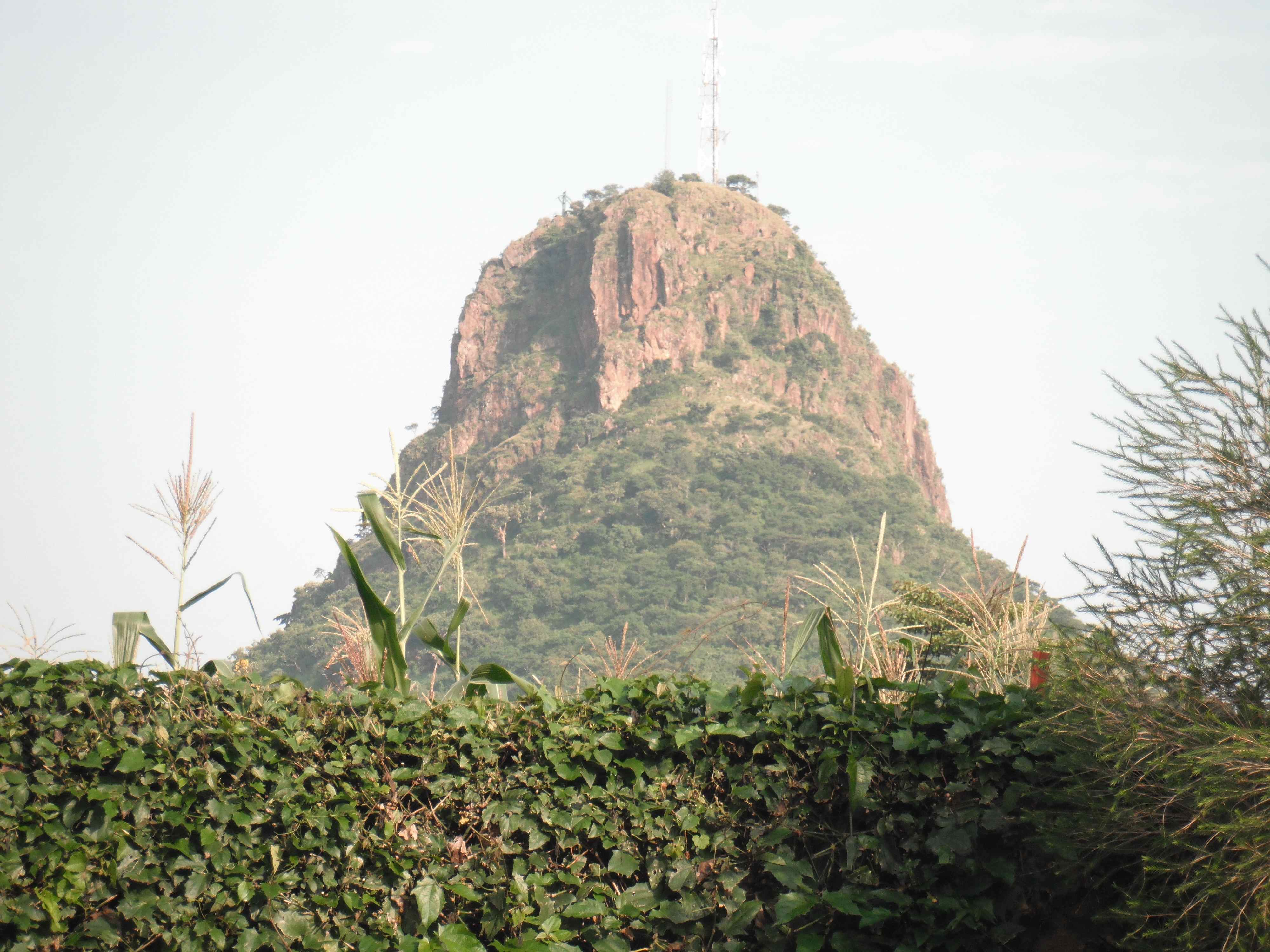
I arrived at Prime Hotel, fanciest hotel in Tororo Uganda in view of Tororo Rock. The area is reputed to have one of the highest malaria rate in East Africa! The electricity was out when I arrived and turns out that black outs are almost a daily occurrence. An article in the inflight magazine of Kenya Airways detail the cost to businesses for generators and fuel in Uganda, and it is a major deterrent to development. Although most businesses have back-up generators, the public hospital in Tororo does not!
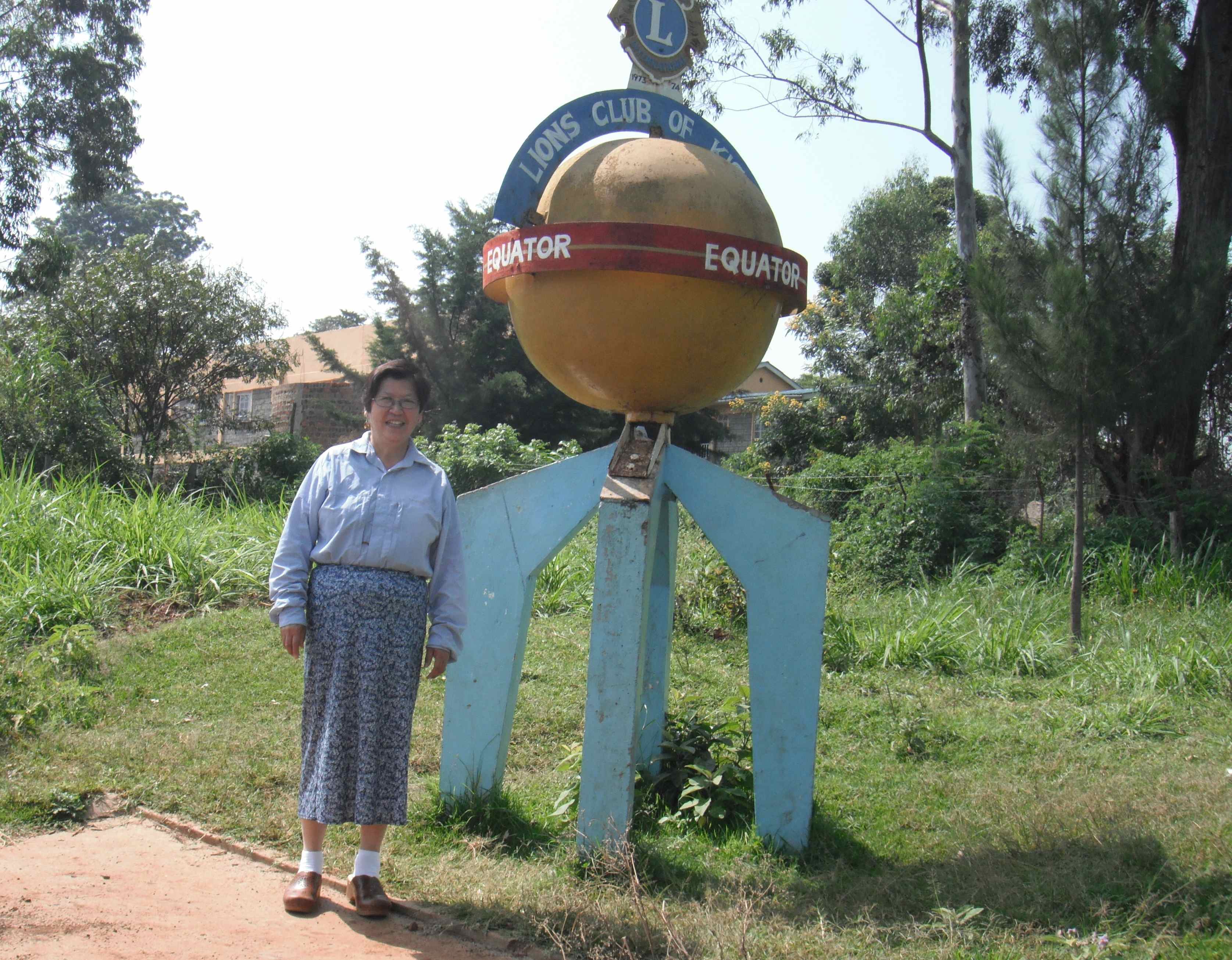
Lucy drove me to the border town of Busia from Kisumu crossing the Equator on the way. The road was potmarked with potholes and "humps", speed bumps. Peter decried the condition of the road that he said was paved only 5 years ago.

Dr. Githeko's assistant (left) brought a couple of students to Nyanza Club, where I was staying, to discuss their work. Peter told me of his research in the impact of vegetation on mosquito larval development. They were also interested in my gregarine competition idea, and may collect gregarines in the process of dissecting mosquitoes. Edna mentioned that since its so much simpler to collect larva, she may dissect some larval guts to see if she can find gregarines. I requested that any they find they collect and store in methanol in the freezer. Perhaps I can bring some gregarines back from this trip. Later I met a graduate student from UC Irvine, Thomas, who is doing metagenomics of the larval gut flora to determine their effect on larval development. He has unidentified non-prokaryotic 16S sequences that he will share with me to determine if they might be gregarine sequences.
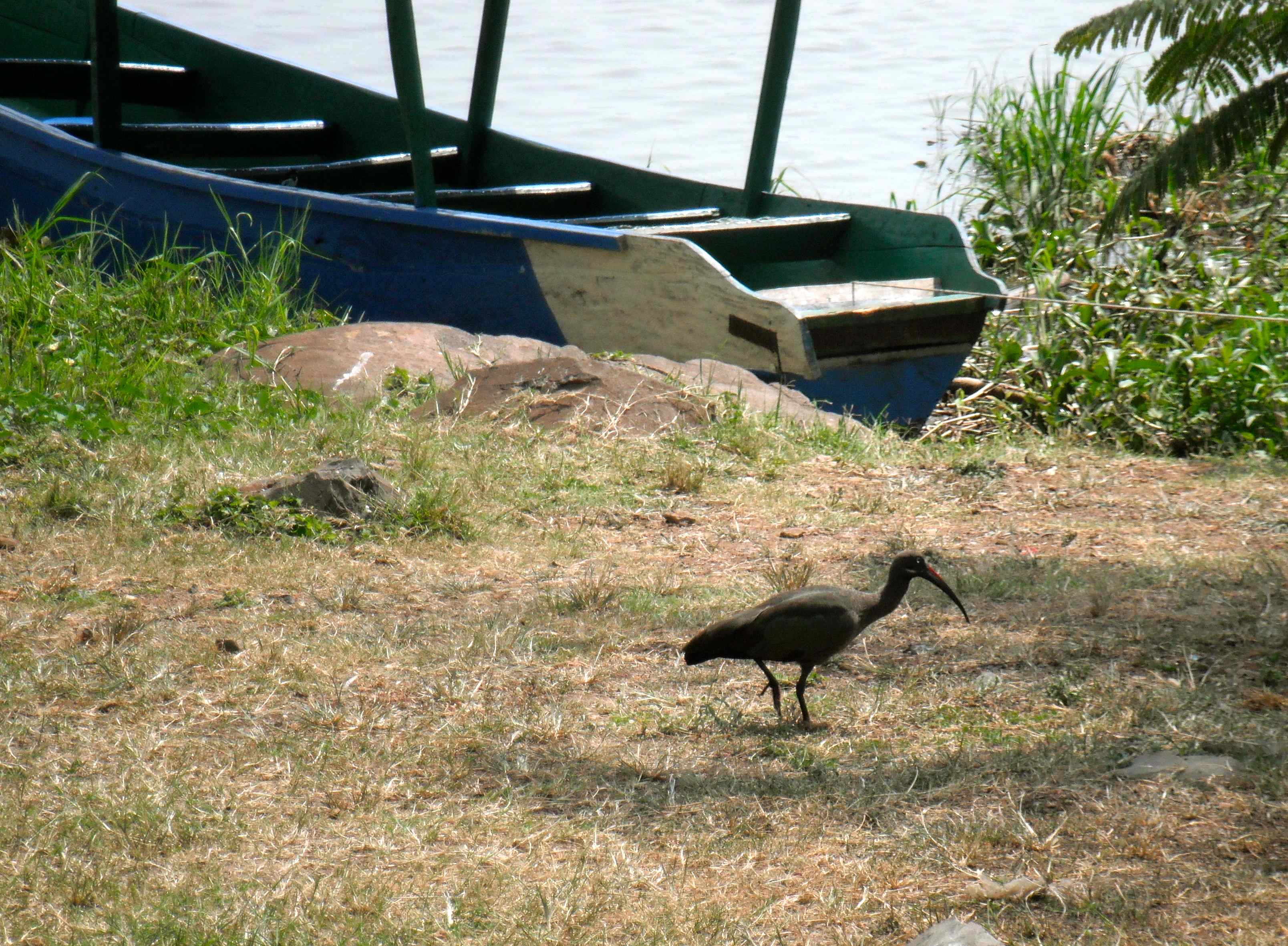
Raucus sound of this Hadada Ibis, similar to Glossy Ibis found in US, but with a bright red culmen above the bill, attracted me at Kiboko Bay Resort on Lake Victoria. This is a nice resort with many birds including Egyptian Goose, Woodland Kingfisher with bright red and black bill and bright blue back, Red-cheeked Cordon Bleu with red cheeks and baby blue front, and Black-headed Gonolek with bright red front.

The closest any animal came to us in Nairobi National Park. Saw many animals, but since all of you know what giraffes, ostriches, warthogs, and various antelopes look like, I will spare you those images.
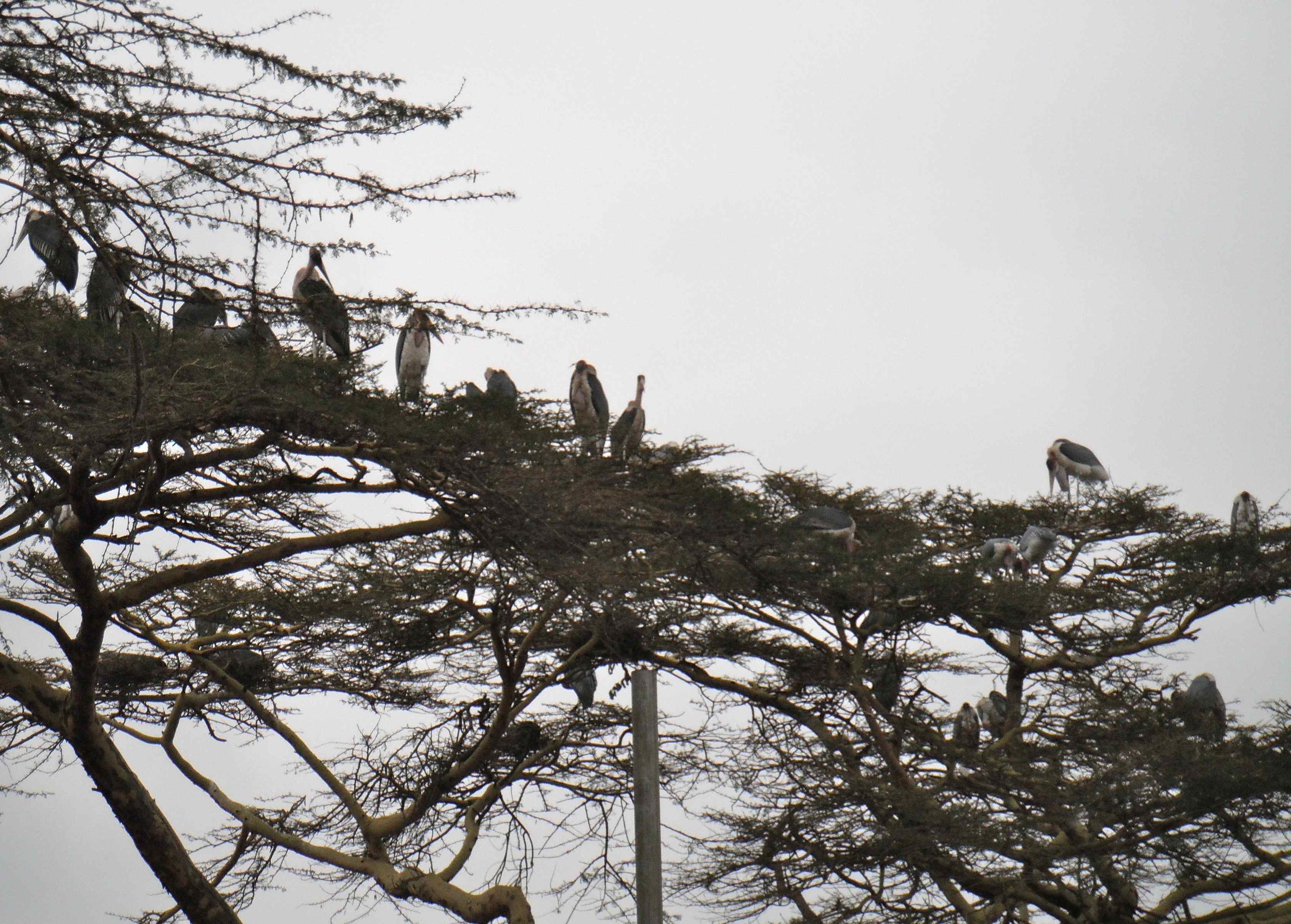
Marabou Storks in a tree in a traffic circle in Nairobi! From my hotel across the street from the west side of Nairobi National Park, every morning and evening, one can see a stream of birds going to and from their roost. If I had packed a spotting scope, I could have seen many animals and birds in the park from my room, but since I didn't, I could only see ostriches and large mammals.






















